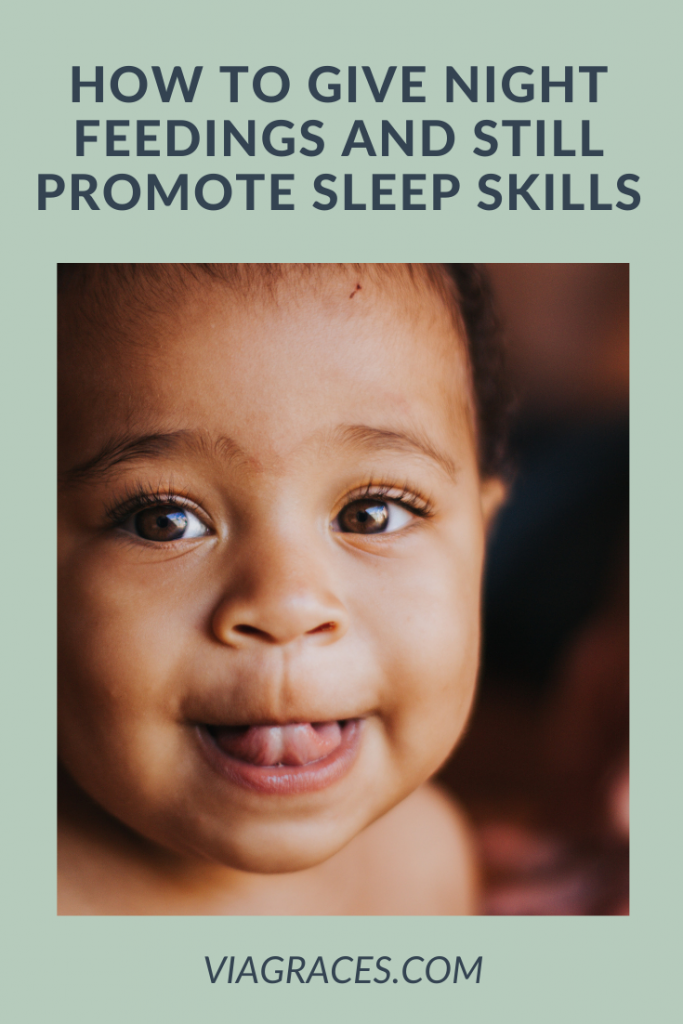Did you know that you can sleep train AND still give your child night feedings? The two don’t have to be mutually exclusive! Sleep training is all about teaching our babies and children how to fall asleep independently (without props!), so that as they experience naturally occurring wake-ups in the night, they are able to slip right into the next sleep cycle without needing help (unless, of course, they need a feeding!).

0-6 months old
When I work with newborns and young babies, I do not expect them to drop any and all night feedings…that just wouldn’t be realistic! So rather than working toward dropping night feedings, we talk about how to give night feedings while still promoting the sleep skills we are working on during the day. (No, I’m not talking about dream feeding!)
Although sleeping through the night is not a goal or an expectation at this age, I have certainly seen babies naturally drop all feedings around 3, 4, and 5 months of age, as they are of a healthy weight, getting enough calories during the day, and their sleep skills support it.
6 months+
When I work with babies over 6 months old, it is very likely time to drop the night time feeding, but it doesn’t have to be as scary as it sounds! Once little ones learn those independent sleep skills necessary to fall asleep for naps and bedtime, most drop any and all night feedings naturally.
If babies are still waking up to feed, there are a few different options I walk through with parents and we decide on which one works best for the child and family. [Note: If a child is underweight and/or the doctor has suggested to keep a night feed, we will keep a night feed! And know that we can still work on those amazing sleep skills.]
So how do you feed your baby at night while still promoting sleep skills?
If you hear your child wake up, wait 10 minutes before responding (with those young newborns, just wait 2-3 minutes).
This will not only give your little one the opportunity to fall back asleep before you respond, but it will also help leave some natural space between waking up and being fed (feeding right after sleep perpetuates the feed-to-sleep association).
Turn on a low light so you can see what you’re doing!
A red or orange light are best so as to not wake you or the baby more than necessary. (The Hatch Rest is a great product for this, plus you can use it as a toddler clock down the road!)
Keep your baby awake as much as possible.
To do this, I suggest you change his diaper before the feed, to both help wake him up a bit more and to make sure he doesn’t leak through it later in the night. You can also tickle his toes, lightly blow on his face, stroke his cheeks, etc., while he’s eating, to keep him awake. (He does not need to be wide awake, he should simply be awake enough that he can get in a full feeding and register that he’s being laid back in his crib when finished.)
If you’re reading this and have no idea what “sleep skills” I’m talking about, or the idea of laying your child down awake is terrifying and/or foreign to you, or you think your child is capable of dropping those night feedings but you don’t know how to get there, let’s chat!
With Grace,
Lauren
